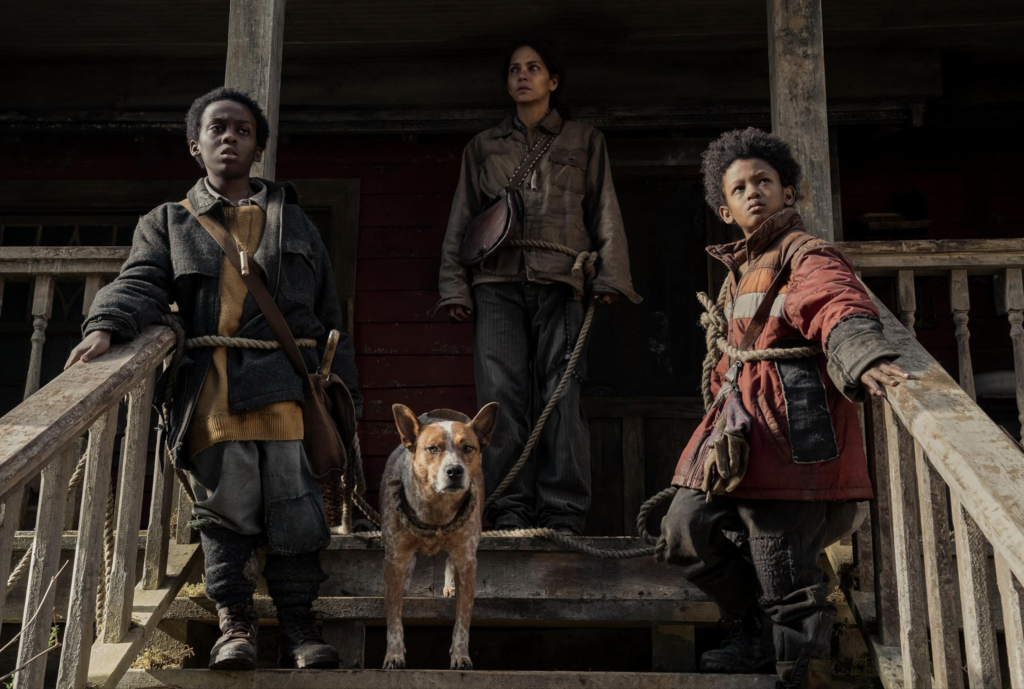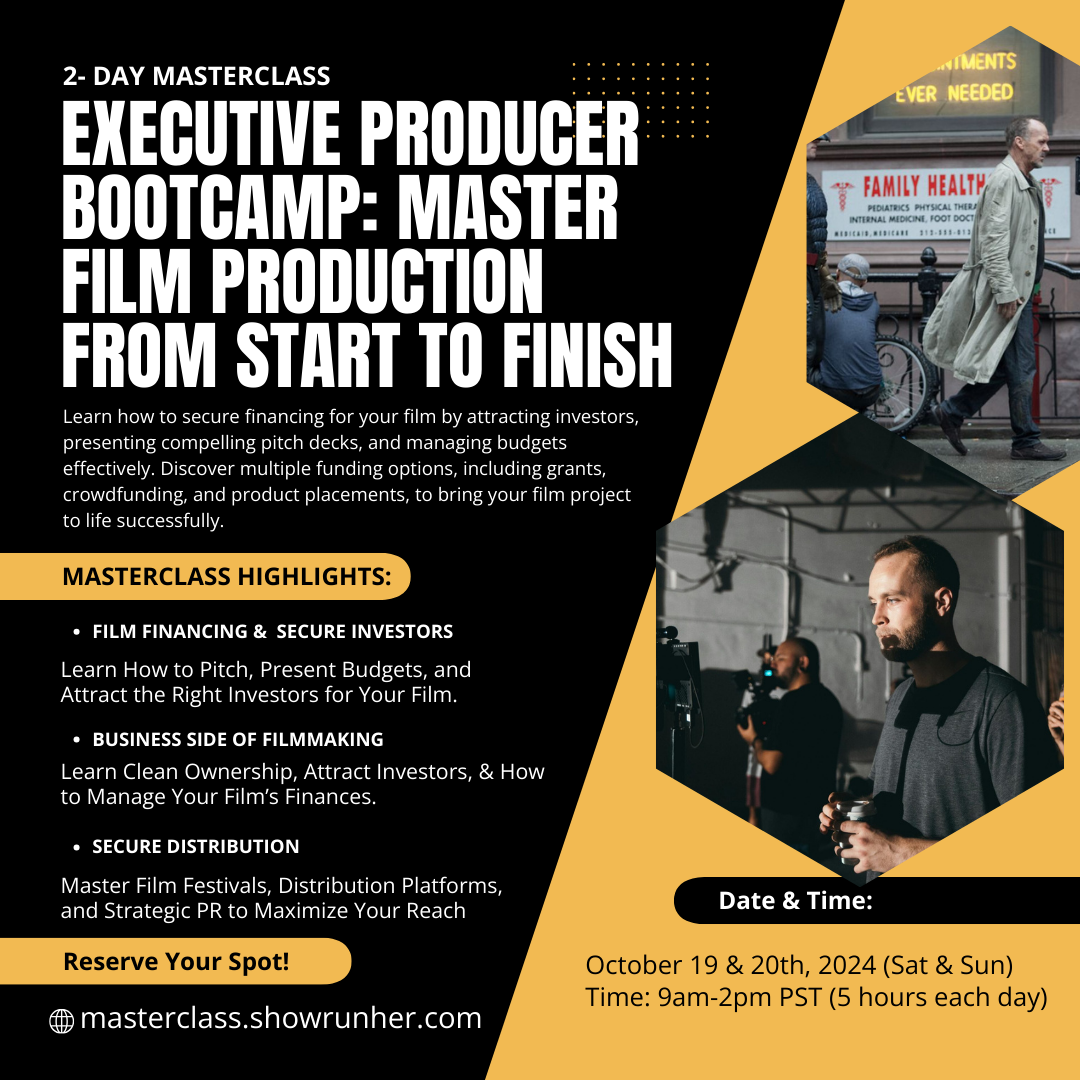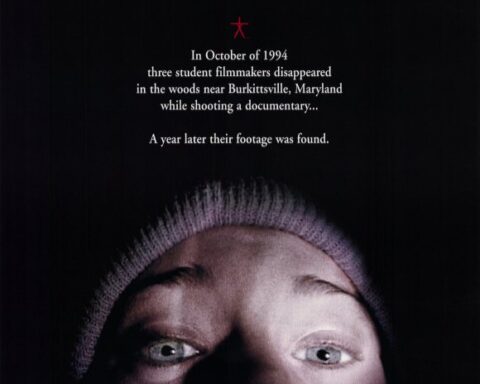I give Never Let Go a 7/10. While it leaves some unanswered questions, it’s a very fun watch, especially for fans of Halle Berry and horror thrillers. Her performance keeps you engaged, and the tension builds nicely toward the end.
Never Let Go is a horror thriller that showcases Halle Berry’s enduring star power. While the storyline leaves many questions unanswered, Berry’s performance shines, reminding us why she’s still a force in the industry. The film centers around a mother, played by Berry, who is determined to protect her family as strange events unravel around her two children. While the first act is slow to build momentum, it eventually picks up in the third act, delivering tense moments and emotional stakes that pull the story together.
Berry’s performance is solid, carrying much of the film’s weight. However, the pacing could have been improved, with certain scenes dragging and others feeling rushed. The film’s premise of loyalty, protection, and the tension between family members adds intrigue, but it leaves several key questions unanswered by the end.

Cinematography Breakdown:
One of the film’s strengths lies in its cinematography. The use of overhead shots adds a layer of intensity, as we see the characters from a distance, making them appear small and isolated this visual approach emphasizes the sense of helplessness that grows throughout the film. I also appreciated the film’s color palette. The muted tones created a sense of unease, reflecting the dark, psychological atmosphere the film aimed to achieve. The lighting was another key element. The shadows and dimly lit rooms played into the horror genre’s signature aesthetic, heightening the feeling of dread.
In particular, the scenes involving Nolan’s sleepwalking were beautifully crafted. The way the camera framed his movement through the house, paired with the eerie silence and the sound of the bell tied to his ankle, created an almost dream-like tension that kept me on edge. It was a perfect marriage of visual storytelling and suspense-building sound design.
However, while much of the cinematography was strong, there were some missed opportunities. The VFX, especially during the fire sequences, felt underwhelming and didn’t blend seamlessly with the film’s overall visual quality. In a movie that relies heavily on building tension, poor effects can break the immersion of the audience. This could’ve been improved to match the otherwise strong visual moments of the film.
The Writing:
When it comes to the writing, Never Let Go had moments of brilliance, particularly in its thematic exploration of family, trust, and betrayal. The tension between Sam and Nolan is well-developed, and their relationship becomes a critical driving force in the film. The dialogue between the two brothers, especially when discussing their mother, feels authentic and gives the audience a glimpse into their fractured relationship.
One aspect I found particularly strong was the character arc for Halle Berry’s role as the mother. The internal struggle she faces—whether to protect her children at all costs or confront the evil lurking within her own family—was written with depth and nuance. Her journey is compelling, though I wish the film had dived deeper into her backstory to further flesh out her motivations.
That said, there were areas where the writing faltered. The narration at the beginning worked well to establish the tone of the film, but its absence throughout the rest of the movie made it feel disconnected. I would’ve preferred more consistent narration or none at all. When narration is only used at the beginning, it can come off as a way to patch up weak writing instead of enhancing the story.
Another weak point in the writing was the pacing. The first act could have been much tighter, trimming down unnecessary scenes and speeding up the story’s momentum.
Complexity to The Film:
Working with kids and a dog in Never Let Go undoubtedly added layers of complexity to the film’s production. Two major challenges stand out:
- Limited Working Hours for Children: One of the biggest challenges when working with child actors is the restriction on the number of hours they can legally work on set. Child labor laws limit their availability, meaning production schedules must be meticulously planned to ensure scenes with the kids are shot within the allowed timeframes. This often requires extra rehearsal time and a well-coordinated team to ensure the children deliver strong performances without becoming fatigued. In Never Let Go, the young actors carried significant emotional weight, especially during the third act, and did a commendable job despite these limitations. However, their limited time on set likely put additional pressure on the crew to capture pivotal moments efficiently.
- The unpredictability of Animals on Set: Filming with a dog adds another layer of unpredictability. While trained animals are often used in film, they still require multiple takes to get things just right, and their actions can sometimes disrupt the flow of a scene. Ensuring the dog hits its mark while also keeping the young actors focused is no small feat. The production team would have needed to carefully coordinate the dog’s scenes to avoid slowing down the filming process, which could have been particularly challenging in a film that already required delicate pacing.
Both children and animals can elevate a film by bringing authentic emotions and moments of levity, but from a production standpoint, they can also cause delays and logistical challenges. Directors and crew need to be flexible and patient, often relying on creative solutions to keep things moving smoothly. Despite these hurdles, Never Let Go managed to navigate the complexities well, delivering solid performances from both the child actors and the dog.
Tension and Character Development:
Despite some of these issues, the film builds tension between its characters, particularly the relationship between the brothers and their mother. Watching the dynamic unfold and deteriorate created an emotional investment in the story. The use of the ritual storyline, especially when it required the kids to participate, was a standout moment. The way it built suspense as the final ritual approached left me holding my breath.
The development of the brothers also added layers to the film. The “good twin vs. bad twin” trope could have easily felt cliché, but the writing handled it in a way that felt organic. I found their relationship relatable, and the film captured the complexities that come with the unique bond of twin siblings. It was especially impressive how the young actors held their own on screen, even in scenes without Halle Berry, carrying the emotional weight of the third act.
Tips for Indie Filmmakers:
- Maximizing Locations: Using a single location, as Never Let Go does, cuts down on production costs and logistical headaches. With smart set design and creative cinematography, you can make one location feel expansive.
- Small Casts, Big Impact: Focusing on a core group of characters can reduce costs while still allowing you to explore deep emotional dynamics, especially if you want talent like Halle Berry. In this film, the interplay between the mother and her two sons provides enough tension to keep the plot engaging.
- Pacing and Visual Storytelling: Avoid unnecessary dialogue that explains backstory. Instead, use visual cues or subtle actions to show relationships and move the story forward. This not only keeps the audience engaged but also tightens the pacing.
- Strong Titles and Marketing: The title Never Let Go had the potential for a strong marketing campaign centered around the idea of letting go of control, but it wasn’t fully realized. As an indie filmmaker, consider how the title of your project can drive your marketing strategy and help sell the emotional core of your story.
Conclusion:
Never Let Go is a solid psychological thriller that showcases Halle Berry’s acting chops while exploring deeper family dynamics. The cinematography, especially the use of overhead shots and framing, plays a critical role in building tension and isolation. However, the film’s pacing and reliance on early narration as a storytelling crutch detract from what could have been a more cohesive narrative.
For indie filmmakers, the movie provides great lessons in cost-saving techniques, like using a single location and a small, focused cast. Additionally, the exploration of sibling relationships and family tension makes for an intriguing watch, even if the movie leaves you with more questions than answers.










